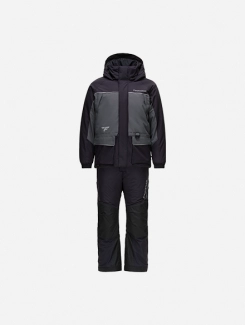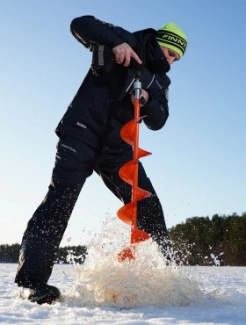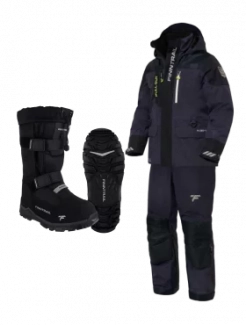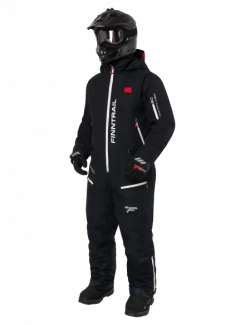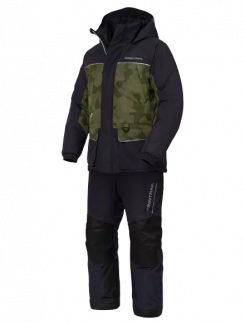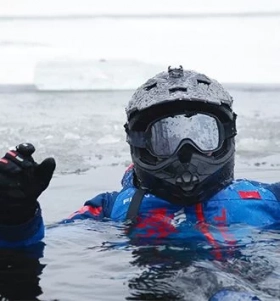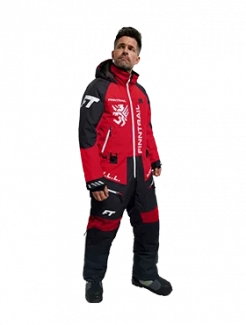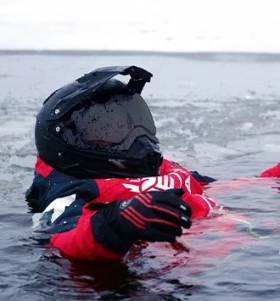How to Catch Big Northern Pike While Ice Fishing
Ice fishing for northern pike is one of the most exciting challenges an angler can experience in the heart of winter. These aggressive predators remain active under the ice, ready to strike at the right presentation. To master how to catch big northern pike while ice fishing, you need to understand their habits, choose the right location, and use effective rigs, lures, and bait.

Understanding Northern Pike Behavior Under Ice
When the lakes freeze, northern pikes don’t hibernate—they adapt. They roam shallow flats, weed beds, and structure areas where they can ambush prey. During early ice and late ice periods, pike move into shallower waters to feed heavily before winter deepens or as it ends.
Midwinter, they often hold near drop-offs or underwater structures such as rock humps, points, and edges. Since pikes are ambush predators, they prefer staying close to cover, ready to burst out when a meal appears.
If you want consistent success with northern pike ice fishing, focus on areas that combine weed lines, cover, and nearby deep water. Understanding where these fish feed and rest gives you a strong foundation before drilling your first hole.
Locating the Best Spots for Ice Fishing Northern Pike
Finding the right spot is the first step in any successful trip. Pike often patrol specific areas throughout the season, and knowing where to drill your holes can save hours of guesswork.
-
Weed lines and weed edges: early and late in the season, green weeds attract baitfish—and big pike follow. Set up along clear weed edges or transition zones between vegetation and open bottom.
-
Rocky drop-offs and points: northern pikes like ambush positions. These structure edges are natural hunting grounds.
-
Shallow bays and flats: during first and last ice, pike cruise in 5 to 10 feet of water. In these areas, they often swim just under the ice looking upward for prey.
-
Mid-lake humps and submerged bars: later in the season, when pressure increases, pikes move deeper. Mid-lake humps provide less disturbance and a steady supply of baitfish.
-
Breaklines and subtle underwater transitions: even minor changes in depth or bottom type can hold fish during the coldest months.
When scouting, use sonar or a camera to locate structure and weed growth. Drill several holes around the area and adjust your setup until you locate active fish. If there’s no action after an hour, move. Covering water is one of the best ways to find feeding pike.
Northern Pike Ice Fishing Rigs
Choosing the right northern pike ice fishing rigs can make all the difference. Pike are powerful fish with sharp teeth, so durable equipment is essential.
Tip-Ups for Pike
Tip-ups are a staple for ice fishing northern pike. They allow you to cover multiple holes at different depths while waiting for the flag to fly. Use a strong line (at least 30-pound test) and a steel or titanium leader to prevent bite-offs. Position baits at various depths, from just off the bottom to a foot under the ice, depending on the depth and activity level.
Quick-Strike Rigs
For large dead or live baits, a quick-strike rig is ideal. It uses two treble hooks—one near the head and one near the tail—ensuring a solid hookset without waiting for the fish to swallow. Quick-strike rigs are highly effective when targeting trophy pike with larger presentations.
Jigging Rods
While tip-ups work passively, jigging rods let you actively search for fish. Use a medium-heavy rod with 15–20 lb braid, tied to a wire or heavy fluorocarbon leader. Vertical jigging with spoons or large soft plastics can trigger aggressive strikes.
Rigging Tips
-
Always use a wire or titanium leader.
-
Check that your hooks are sharp and strong.
-
Set bait 1–3 feet off the bottom, or closer to the ice in shallow water.
-
Keep holes free of ice and check your setups regularly.
Best Bait for Northern Pike Ice Fishing
When targeting these toothy predators, choosing the best bait for ice fishing northern pike is key. Pike respond differently depending on water clarity, temperature, and feeding mood.
Dead Bait
Dead bait is often the best bait for northern pike ice fishing. Large dead baitfish such as smelt, cisco, or herring are irresistible to pike. Rig them horizontally on a quick-strike setup and suspend them slightly off the bottom. Dead bait gives off a natural scent and an easy meal appearance, ideal for big, lazy pike.
Live Bait
Where regulations allow, large suckers, shiners, or chubs are top choices. Hook them through the back or dorsal fin to let them swim naturally. The movement will attract curious pikes from a distance.
Artificial Lures
Northern pike ice fishing lures are a great option when fish are active. Use large spoons, swimbaits, or rattle baits to imitate wounded prey. Bright colors like red, silver, and chartreuse perform well under the ice. Jigging spoons with a piece of minnow added can combine flash and scent for extra appeal.
Recommended Choices
-
Best bait: large dead smelt or herring on a quick-strike rig.
-
Best lures: heavy spoons, soft plastic swimbaits, and blade baits.
-
Best bait: fresh dead baitfish or live suckers when legal.
Ice Fishing Northern Pike Tip-Ups
Tip-ups are a traditional and effective way to catch northern pike through the ice. Use large spools with smooth drag, 30–40 lb braided line, and steel leaders. Set multiple tip-ups in a spread pattern across different depths to cover more area. When a flag pops, approach slowly to avoid spooking the fish. Let the pike take the bait for a few seconds, then set the hook with a firm, steady motion.
Tip-ups work best when combined with dead or live bait presentations. Periodically check your lines to remove ice buildup and ensure your bait is still fresh and moving freely.
Tips for Ice Fishing Northern Pike
Whether you’re new or experienced, these northern pike ice fishing tips can make a huge difference in your results:
-
Vary your depths. Set baits at multiple depths until you find the strike zone.
-
Cover water. Drill several holes and move if you don’t get bites within an hour.
-
Stay mobile. Don’t sit in one spot all day—pike move, and so should you.
-
Use both active and passive setups. Combine jigging rods with tip-ups for full coverage.
-
Check your rigs often. Ice, weeds, or freezing can ruin your presentation.
-
Match the size of your bait to your target. Big pike prefer big meals.
-
Fish during prime daylight hours. Many anglers report peak action from 9 a.m. to 3 p.m.
-
Keep quiet. Noise on the ice can spook fish in shallow water.
-
Stay safe. Always test ice thickness and wear proper cold-weather gear.
These ice fishing for northern pike tips are proven by seasoned anglers and work across most northern lakes and rivers.
Best Way to Catch Northern Pike Ice Fishing
The best way to catch northern pike ice fishing is a combination of location, presentation, and persistence. Find structure that attracts baitfish, use the right northern pike ice fishing rigs with durable leaders, and present large, natural-looking bait. Mix passive setups like tip-ups with active jigging to cover more area. Adjust depth, lure size, and bait type until you find what triggers strikes.
Success often comes to those who adapt—keep experimenting until you find the perfect formula for the day’s conditions.
Final Thoughts
Targeting big pikes through the ice is about understanding behavior, mastering technique, and using the right gear. When you combine the best bait for northern pike ice fishing with effective rigs and smart location choices, the reward is a powerful strike and a memory that lasts all winter.
Whether you’re chasing your first trophy or refining your strategy, these northern pike ice fishing tips will help you catch more and bigger fish this season. Stay safe, stay patient, and enjoy every flag that flies.

